Transportation to the new colony
Learning intention
Students are learning to:
- investigate the reasons for convict transportation
- discover why NSW was chosen as the destination of the First Fleet
Success criteria
Students will be successful when they can:
- determine a range of factors which contributed to convict transportation
- describe conditions in an English gaol
- explain why NSW was chosen over other places
- identify leadership qualities needed for managing the First Fleet
Student Activities
Inside Newgate Prison
Students examine a prison image to ascertain the conditions inside prisons in England.
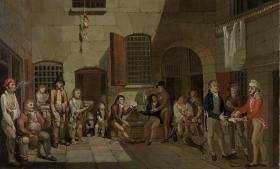
Convict conversation
Students imagine a conversation inspired by the image of convicts under transport.
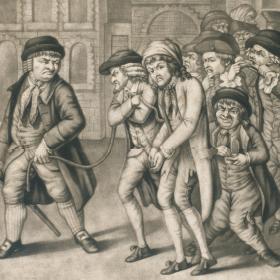
Hulks
Students study the image of convict workers from a hulk in England to learn about convict work whilst imprisoned.
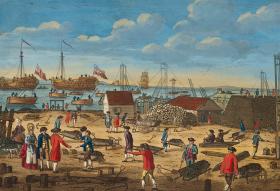
Why New South Wales?
Students investigate the reasons behind the First Fleet’s journey to New South Wales.
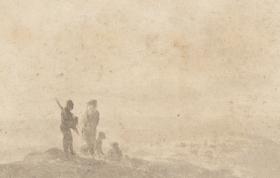
Who was in charge of the First Fleet?
Students observe and interpret the painting of Arthur Phillip to comprehend the man and leader.
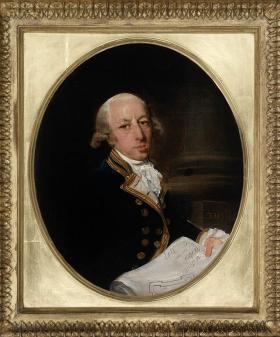
NSW SYLLABUS FOR THE AUSTRALIAN CURRICULUM HISTORY K–10
- HT2-3 describes people, events and actions related to world exploration and its effects
- HT2-4 describes and explains effects of British colonisation in Australia
- HT2-5 applies skills of historical inquiry and communication
Stories of the First Fleet, including reasons for the journey, who travelled to Australia, and their experiences following arrival (ACHHK079)
Students:
- identify reasons for the voyage of the First Fleet and explain why various groups were passengers
- using a range of sources, investigate the everyday life of ONE of the following who sailed on the First Fleet and lived in the early colony: a soldier, convict, ex-convict, official
Comprehension: chronology, terms and concepts:
- respond, read and write, to show understanding of historical matters
- use historical terms and concepts
Analysis and use of sources:
- locate relevant information from sources provided
Perspectives and interpretations:
- identify different points of view within an historical context
Empathetic understanding:
- explain how and why people in the past may have lived and behaved differently from today
Cause and effect: events, decisions or developments in the past that produce later actions, results or effects, eg how conditions and decisions in Britain resulted in the journey of the First Fleet.
Perspectives: people from the past will have different views and experiences, eg views on the arrival of the British in Australia from a British and an Aboriginal point of view.
Empathetic understanding: developing an understanding of another’s views, life and decisions made.
Learning across the curriculum
- Critical and creative thinking
- Ethical understanding
- Literacy
Why did Europeans settle in Australia?
Stories of the First Fleet, including reasons for the journey, who travelled to Australia, and their experiences following arrival (ACHASSK085)
- investigating reasons for the First Fleet journey, including an examination of the wide range of crimes punishable by transportation, and looking at the groups who were transported
- investigating attitudes to the poor, the treatment of prisoners at that time, and the social standing of those who travelled to Australia on the First Fleet, including families, children and convict guards
Additional information
The following information supports the above activities. Read the activities first.
Activity 4 Information
Some suggested content for your iceberg...
At the top of the iceberg (the part that we see above water) is the event.
- The First Fleet
On the bigger part of the iceberg (that is underwater) list all the other events that contributed to it.
- Industrial Revolution replacing jobs
- America not taking any more convicts
- Overcrowding of the hulks
- Lobbying by people like Banks
Right at the bottom (the pointy bit of the underwater iceberg) could be the deeper issues, attitudes and assumptions that are more hidden.
- British Government wanted to be ‘rid of’ these prisoners due to underlying political unrest
- Possible fear of revolt by the masses (French Revolution did happen in 1789!)
- Protect English society from the bad influence of the criminal class
- Wanting to have a military outpost in the Pacific region
- Prisoners’ lives were not valued
- Starvation and desperation of prisoner’s lives
- Unfairness of very harsh sentencing for minor crimes
Activity 5 Answers
Q: How many languages did Arthur Phillip speak?
A: He spoke five languages (English, French, German, Spanish & Portuguese)
Q: Was he born into a rich family?
A: No, Arthur was born in England in 1738 and was from a humble background. He joined the British Navy when he was nine years old. As a sailor and eventually a Captain, he travelled the world.
Q: Did he have any children?
A: He married twice and had no children.
Q: Do you think he ever worked as a spy?
A: Yes! Due to his gift for languages he was a spy in France and reported back to England. He was also loaned out as a ship’s captain for the Portuguese Navy during Portuguese/Spanish war.
Q: Why was he chosen to lead the First Fleet?
A: We don’t know. No one wanted the job. It was considered a mediocre appointment. Arthur Phillip’s career at that point has been described as ‘solid’ but not exceptional.
Source list for image details in student activities
Hulks
Image 1: Artist unknown, View near woolwich in Kent shewing [sic] the employment of the convicts from the hulks, c. 1800 / printed for Bowles & Carver, London: Bowles & Carver, c. 1800
Why New South Wales?
Image 1: Joy Lai, Cockatoos amongst cabbage palms, Kamay National Park, Sydney: State Library of NSW, 2020